Subtotal: $57.00
Revolutioner
$300.00 $62.00
Product Include:
File size:
Revolutioner
**More information:
Get Revolutioner at Salaedu.com
Description
“If you want to find the secrets of the universe, think in terms of energy, frequency and vibration.”
– Nikola Tesla
Frequency and Vibration Is The Key
Everything is vibration because, at the lowest microscopic level, you will notice subatomic particles and electrons are vibrating at a certain frequency. Vibration is what makes up everything to be uniquely what it is.
The ultimate goal of the Revolutioner Project is to promote healing by bringing the body to its natural resonating frequencies. Over the last 4 years, since the start of the project, we’ve done thousands of tests to implement different successful studies into the program.
One of the cornerstone studies is the one done by NASA. NASA discovered that low-frequency electromagnetic field signals stimulate neural stem cells. These particular signals were able to increase growth of stem cells by 400%. It was also discovered that DNA was dramatically improved where 175 maturation (aging) genes were downgraded, and 150 growth and cellular proliferation genes were enhanced. More detail on this study can be learned from the publication here.
This means that it is possible to promote healing and reverse aging with low-frequency pulses.
Please note that the Revolutioner program is not a replacement for medical or psychological treatment and is not intended to diagnose, treat, cure or prevent any disease. It is a tool to use in addition to your current treatment.
Scroll down to learn more of how it works and how to use it every day.
Once You’ve Registered
Once you’ve registered, you can download the iOS (Apple) or Android app or use an internet browser to access your sessions. You’ll have access to Level 1 which consists of 30 sessions (one for each day).
To start a session, just tap or click on the session link and it will start playing. You must close your eyes and do nothing else for the duration of the 12 minutes. All you have to do is listen. The sessions will work as it should.
After every 30-day period, you’ll be able to mark a level as complete, which will give you access to the next level. The program has a total of 30 levels.
Listening to a new session every day is important. We alternate the stimulus and strength of the sessions in every level. This is necessary because just like your muscles respond better to different exercises, the brain also responds better to different stimulations. If you listen to the same session every day, your brain will get used to it and the results won’t be that effective.
We recommend that you listen to one session once a day. It is enough for the brain to pulse the frequencies throughout the entire day. If you take a nap during the day, you can choose to redo a session after your nap.
With Revolutioner, you will start to notice a difference even after the very first session. After the 1st month you should experience a massive improvement.
The Cost to Register
We believe that this technology is the future of well-being and we are striving to get this in the hands of as many people as possible. Enabling people to live a healthy life is the mission of this project.
The fee is $30 per month. There are no contracts or penalties for cancelling. Please note that you have access to the sessions for as long as your membership is active.
If you’re not satisfied with the results you’re getting, just send us an email and we’ll cancel your membership immediately. No questions asked.
Take the time now to decide if you’re going to do this program and make the change that is needed. You can register below.
Healing Starts In The Brain
The brain is an electromagnetic field system that pulses electrical signals. These signals are called brainwaves. Brainwaves run at different speeds which are measured in frequency (Hz). The dominant speed or frequency of the brain is extremely important to one’s health. When the brain runs at a speed of between 8Hz and 12Hz, the body is completely relaxed and stress-free. That is one of the reasons why healing occurs in the brain and body at those particular speeds.
If we can tune the speed of the brain, then we can let the brain pulse electromagnetic field signals at 8Hz to 12Hz. So how then can we tune the speed of the brain? Fortunately, studies have proven that brainwaves can be safely tuned with sound frequencies. The process is called the Frequency Following Response. Revolutioner uses this sound technology to tune the brain’s dominant speed to between 8Hz and 12Hz.
In the Revolutioner program, the user listens to a 12-minute audio session every day. The 12 minutes of sound pulses a square waveform soundwave at those low frequencies. The soundwave stimulates the brain in that same range and in return the brain pulses electromagnetic signals of 8Hz to 12Hz to the entire body.
This process enables the brain to pulse the low frequencies on its own without an outside electromagnetic signal. It therefore provides a safe and continues healing frequency throughout the entire day.
The Technology Behind It
Revolutioner uses sound frequencies to tune the brain’s dominant speed through a complex neural process called the Frequency Following Response.
The Frequency Following Response refers to the brain’s electrical response to rhythmic sensory stimulation, such as pulses of sound or light.
When the brain is presented with a rhythmic stimulus, such as a pulsing tone, the rhythm is reproduced in the brain in the form of electrical pulses. Your brain synchronizes with the tone. For example: A pulsing tone of 10 beats per second will result in brainwaves pulsing an electromagnetic field signal of 10Hz.
The low frequencies of the Revolutioner sessions are embedded in a 2-minute audio tone. The user only has to listen to the short audio session for the brain to produce the healing frequencies.
The effects of the Frequency Following Response were first discovered by Dr. Gerald Oster and reported in the October 1973 issue of Scientific American. Revolutioner has further developed this technology and created a program specifically designed to promote healing.
We Recommend Using Headphones
Headphones are not required but is recommended. This will make sure that any outside noise is cancelled out.
We get many people asking us how is it possible to stimulate low frequencies if humans can only hear sounds between 20Hz and 20 000Hz and that most headphones have a range of 20Hz to 20 000Hz.
The answer is this: Even though the low frequencies stimulated are below 20Hz, the carrier frequencies are well between 20Hz and 20 000Hz.
For example, we use a tone of 432Hz that pulses at 10 beats per second. This beating pulse of 10 beats per second stimulates 10Hz in the brain.
Therefore any pair of headphones will be sufficient. If this makes no sense to you, don’t worry, it’s not important to understand.
Studies on the Frequency Following Response
Influence of low-frequency vibrations on blood flow improvement in human’s limbs. Biomed Mater Eng. 2017;28(2):117-130. doi: 10.3233/BME-171661. Institute of Mechatronics, Kaunas University of Technology Laboratory of heat equipment research and testing, Lithuanian Energy Institute
Effects of a low-frequency sound wave therapy programme on functional capacity, blood circulation and bone metabolism in frail old men and women. Clin Rehabil. 2009 Oct;23(10):897-908. doi: 10.1177/0269215509337273. Epub 2009 Aug 28. Department of Health Sciences, University of Jyväskylä, Jyväskylä, Finland
Physiological and Molecular Genetic Effects of Time-Varying Electromagnetic Fields on Human Neuronal Cells Sep 01, 2003 Thomas J. Goodwin, Ph.D. Lyndon 8. Johnson Space Center
The effect of low-frequency sound stimulation on patients with fibromyalgia: A clinical study; Jan-Feb, 2015 Lili Naghdi, Heidi Ahonen, Pasqualino Macario, Lee Bartel Pain Res Manag. 2015 Jan-Feb; 20(1): e21–e27.
Neuroreport. 2015 Mar 4;26(4):197-205. Cerebral glucose metabolism changes in rat brain upon forepaw electrical stimulation at different frequencies. Kim HN1, Jung WB, Kang MJ, Im GH, Lee JH, Choe BY.
J Neurol Phys Ther. 2015 Jan;39(1):23-30. doi: 10.1097/NPT.0000000000000062. Improvements in hand function in adults with chronic tetraplegia following a multiday 10-Hz repetitive transcranial magnetic stimulation intervention combined with repetitive task practice. Gomes-Osman J1, Field-Fote EC.
Life Sci Space Res. 1970;8:177-87. The effects of electric fields on circadian rhythmicity in men. Wever R1.
Williams, J., Ramaswamy, D. and Oulhaj, A., 2006. “10 Hz flicker improves recognition memory in older people.” BMC Neurosci. 7, 21.
Budzynski, T., Jordy, J., Budzynski, H., Tang, H. and Claypoole, K., 1999. “Academic Performance Enhancement with Photic Stimulation and EDR Feedback. Journal of Neurotherapy.” 3, 11-21.
Williams, J. H., 2001. “Frequency-specific effects of flicker on recognition memory.” Neuroscience. 104, 283-286.
Howard, C. E., Graham, L. E., 2nd and Wycoff, S. J., 1986. “A comparison of methods for reducing stress among dental students.” J Dent Educ. 50, 542-544.
Leonard, K. N., Telch, M. J. and Harrington, P. J., 1999. “Dissociation in the laboratory: a comparison of strategies.” Behav Res Ther. 37, 49-61.
Lane, J. D., Kasian, S. J., Owens, J. E. and Marsh, G. R., 1998. “Binaural auditory beats affect vigilance performance and mood.” Physiol Behav. 63, 249-252.
Rosenfeld, J. P., Reinhart, A. M. and Srivastava, S., 1997. “The effects of alpha (10-Hz) and beta (22-Hz) “entrainment” stimulation on the alpha and beta EEG bands: individual differences are critical to prediction of effects.” Appl Psychophysiol Biofeedback. 22, 3-20.
Morse, D. R. and Chow, E., 1993. “The effect of the Relaxodont brain wave synchronizer on endodontic anxiety: evaluation by galvanic skin resistance, pulse rate, physical reactions, and questionnaire responses.” Int J Psychosom. 40, 68-76.
San Martini, P., Venturini, R., Zapponi, G. A. and Loizzo, A., 1979.” Interaction between intermittent photic stimulation and auditory stimulation on the human EEG. Preliminary investigation through power spectral analysis.” Neuropsychobiology. 5, 201-206.
Joyce, M. and Siever, D., 2000. “Audio-Visual Entrainment (AVE) Program as a Treatment for Behavior Disorders in a School Setting.” Journal of Neurotherapy. 4, 9-25.
Ossebaard, H. C., 2000. “Stress reduction by technology? An experimental study into the effects of brainmachines on burnout and state anxiety.” Appl Psychophysiol Biofeedback. 25, 93-101.
Wahbeh, H., Calabrese, C. and Zwickey, H., 2007a. “Binaural beat technology in humans: a pilot study to assess psychologic and physiologic effects.” J Altern Complement Med. 13, 25-32.
Kliempt, P., Ruta, D., Ogston, S., Landeck, A. and Martay, K., 1999. “Hemispheric-synchronisation during anaesthesia: a double-blind randomised trial using audiotapes for intra-operative nociception control.” Anaesthesia. 54, 769-773.
Padmanabhan, R., Hildreth, A. J. and Laws, D., 2005. “A prospective, randomised, controlled study examining binaural beat audio and pre-operative anxiety in patients undergoing general anaesthesia for day case surgery.” Anaesthesia. 60, 874-877.
Wahbeh, H., Calabrese, C., Zwickey, H. and Zajdel, D., 2007b. “Binaural beat technology in humans: a pilot study to assess neuropsychologic, physiologic, and electroencephalographic effects.” J Altern Complement Med. 13, 199-206.
Patrick, G. J., 1996. “Improved neuronal regulation in ADHD: An application of fifteen sessions of photic-driven EEG neurotherapy.” Journal of Neurotherapy. 1, 27-36.
Kumano, H., Horie, H., Kuboki, T., Suematsu, H., Sato, H., Yasushi, M., Kamei, T. and Masumura, S., 1997. “EEG-driven photic stimulation effect on plasma cortisol and beta-endorphin.” Appl Psychophysiol Biofeedback. 22, 193-208.
Nomura, T., Higuchi, K., Yu, H., Sasaki, S., Kimura, S., Itoh, H., Taniguchi, M., Arakawa, T. and Kawai, K., 2006. “Slow-wave photic stimulation relieves patient discomfort during esophagogastroduodenoscopy.” J Gastroenterol Hepatol. 21, 54-58.
Vichitvejpaisal, P., 2012. “The Effect of Binaural Beat Audio on Operative Anxiety in Patients Undergoing Local Anesthesia for Ophthalmic Surgery.” (Publication in a peer-reviewed journal is forthcoming)
Solomon, G. D., 1985. “Slow wave photic stimulation in the treatment of headache–a preliminary report.” Headache. 25, 444-446.
Berg, K., and Siever, D., 2009. “A controlled comparison of audio-visual entrainment for treating Seasonal Affective Disorder.” Journal of Neurotherapy 13.3 (2009): 166-175.
We recommend the following additional readings.
Anderson DJ. (1989) The treatment of migraine with variable frequency photo-stimulation. Headache. 29(3):154-155.
Anoukhin, A. “EEG Alpha Rhythm Frequency and Intelligence in Normal Individuals.” Intelligence, 23: 1-14
Baehr, E., PhD, Rosenfeld, J. Peter, PhD, & Baehr, R., PhD “Frontal Asymmetry Changes Reflect Brief Mood Shifts in both Normal and Depressed Subjects.” Annual Conference, Society of Neuronal Regulation
Baum, Kenneth “The Mental Edge”
Benson, H., M.D. “The Relaxation Response”
Benson H., Wallace, R.K. “Decreased Blood Pressure in Hypertensive Subjects Who Practiced Meditation.” Circulation Supplement II to Vols. 45 and 46
Berg, K, Siever, D (1999). “Audio-Visual Entrainment as a Treatment Modality for Seasonal Affective Disorder.” Presented at the Society for Neuronal Regulation.
Berg, K, Mueller, H., Siebael, D., Siever, D. (1999). “Outcome of Medical Methods, Audio-Visual Entrainment, and Nutritional Supplementation for the Treatment of Fibromyalgia Syndrome.” Presented at the Society for Neuronal Regulation.
Bermer, F. (1958). “Cerebral and cerebellar potentials.” Physiological Review, 38, 357-388.
Boersma, F., Gagnon, C. (1992). “The Use of Repetitive Audiovisual Entrainment in the Management of Chronic Pain.” Medical Hypnosis Journal, Vol 7, No3: 80-97
Boynton, T. (2001). “Applied research using alpha/theta training for enhancing creativity and well-being.” Journal of Neurotherapy, 5(1-2), 5-18.
Brucato, D., Abascal, J. (1990) “Pilot Study – Effects of Synchro Energizer Mediated Stress Management With the Metro-Date Police Department”
Brackopp, G. W. (1984). Review of research on Multi-Modal sensory stimulation with clinical implications and research proposals. Unpublished manuscript–see Hutchison (1986).
Budzynski, T., Ph.D. (1977). “Tuning in on the twilight zone.” Psychology Today, August.
Budzynski, T., Ph.D. “Brain Lateralization and Rescripting”
Budzynski, T., Ph.D. “The Case for Alpha-Theta: A Dynamic Hemispheric Asymmetry Model”
Budzynski, T., Ph.D. “Clinical Guide to Light and Sound”
Budzynski, T., Ph.D. (1995) “Barebones 14 Hz EEG training for migraine.” Presented at the FUTUREHEALTH EEG conference
Budzynski, Thomas H. (2009) “Introduction to quantitative EEG and neurofeedback: Advanced theory and applications.” Academic Press.
Cade, C. M. & Coxhead, N. (1979) “The Awakened Mind: BiofeedBack and the Development of Higher States of Consciousness.” New York: Delacorte Press.
Chatrian, G., Petersen, M., Lazarte, J. (1960). “Responses to Clicks from the Human Brain: Some Depth Electrographic Observation.” Electroencephalography and Clinical Neurophysiology, 12: 479-487
Cramond, Bonnie. “Attention-Deficit Hyperactivity Disorder and Creativity – What’s the Connection?” The Journal of Creative Behaviour, Vol 28, Number 3, Third Quarter 1994
Christopher, Bonny R. (2010) “The Influence of Binaural Beats on Vigilance and Beta Brainwave Magnitudes.”
Deikman, A. (1969). “De-automatization and the mystic experience.” In C. T. Tart (Ed.), Altered States of Consciousness. New York: John Wiley & Sons.
Dempsey, E., Morison, R. (1942). “The Interaction of Certain Spontaneous and Induce Cortical Potentials.” American Journal of Physiology, 135: 301-307
Dijk, E.O. and Nijholt, A. and van Erp, J.B.F. and Kuyper, E. and van Wolferen, G. (2010) “Audio-tactile stimuli to improve health and well-being.” Proceedings symposium on Haptic and Audio-Visual Stimuli: Enhancing Experiences and Interaction, 7 July, 2010, Amsterdam, The Netherlands. 1-10.
Donaldson, S., PhD and Donaldson, M., MEd. “QEEG, Psychological Status and EMG Activity in Fibromyalgia.” SNR 2002, International Society for Neuronal Regulation
Du Plessis, Alten. (2010) “Combining Brainwave Entrainment, Mind Programming Techniques and Tracking Technologies to Help Individualize and Optimize the Soft Skills Development of University Students.” World Conference on E-Learning in Corporate, Government, Healthcare, and Higher Education. Vol. 2010. No. 1.
Egner, T., & Gruzelier, J. H. (2003, in press) Ecological validity of neurofeedback: Modulation of slow wave EEG enhances musical performance. NeuroReport, 14(1)
Eppley, K.R., Abrams, A. (1989). “Differential Effects Of Relaxation Techniques on Trait Anxiety: A Meta-Analysis.” Journal of Clinical Psychology, Vol 45, 6: 957-973
Evans, R J., Gustafson, L. A., O’Connell, D. N., Orne, M. T. & Shor, R. E. “Verbally induced behavioral response during sleep.” Journal of Nervous and Mental Disease, 1, 1-26.
Felipe, A. “Attitude change during interrupted sleep.” Yale University Doctoral dissertation
Fox, P., Raichle, M. (1985). “Stimulus Rate Determines Regional Blood Flow in Striate Cortex.” Annals of Neurology, Vol 17, No 3: 303-305.
Fredrick, J., Lubar, J., Rasey, H., Blackburn, J. (1999). “Effects of 18.5 Hz Audiovisual Stimulation On EEG Amplitude at the Vertex.” Proceedings AAPB Thirteenth Anniversary Annual Meeting, 42-45.
Foster, D. S. (1990) “EEG and subjective correlates of alpha frequency binaural beats stimulation combined with alpha biofeedBack.” Ann Arbor, MI: UMI, Order No. 9025506.
Foulkes, D. & Vogel, G. (1964). “Mental activity at sleep-onset.” Journal of Abnormal Psychology, 70, 231-243.
Garfield, C. and Bennett, H. “Peak Performance: Mental Training Technique of the World’s Greatest Athlete”
Giannitrapani, D. (1969). “EEG Average Frequency and Intelligence.” Electroencephalography & Clinical Neurophysiology, 27, 480-486.
Goleman, D. “The Relaxed Body”
Gontgovsky, S., Montgomery, D. (1999). “The Physiological Response to “Beta Sweep” Entrainment.” Proceedings AAPB Thirteenth Anniversary Annual Meeting, 62-65.
Goodin, Peter, et al. (2012) “A High-Density EEG Investigation into Steady State Binaural Beat Stimulation.” PloS one 7.4
Gurnee, R. “Major Depressive Disorder: QEEG Subtypes and Treatment Implications.” Annual Conference, Society of Neuronal Regulation
Hammond, D. Corydon, Ph.D. (1999). “Treatment of chronic fatigue syndrome with neurofeedback and self-hypnosis: A case report.” Journal of Neurotherapy, 3 (3 & 4) 63-64.
Hammond, D. Corydon, Ph.D. “EEG Patterns Associated with High Hypnotizability: Practical Clinical Implications”
Hammond, D. Corydon, Ph.D. “Roshi Compared with the Rosenfeld Depression Protocol:A Case Report.” Annual Conference, Society of Neuronal Regulation
Hardt, J. V, & Kamiya, J. (1978). “Anxiety change through electroencephalographic alpha feedback seen only in high anxiety subjects.” Science, 201, 79-81.
Hawes, T., M.ED., ED.S. “Using Light And Sound Technology To Access “The Zone” In Sports And Beyond”
Hermens DF, Soei EX, Clarke SD, Kohn MR, Gordon E, Williams LM. (2005). “Resting EEG theta activity predicts cognitive performance in attention-deficit hyperactivity disorder.”
Hoovey, Z. B., Heinemann, U. & Creutzfeldt, O. D. (1972). “Inter-hemispheric ‘synchrony’ of alpha waves.” Electroencephalography and Clinical Neurophysiology, 32, 337-347.
Hurley, J.D., & Meminger, S. R. (1992). “A relapse-prevention program: Effects of electromyographic training on high and low levels of state and trait anxiety.” Perceptual and Motor Skills. 74, 699705.
Ibric, Victoria L. , MD, PhD. “Neurofeedback in major depression associated to addictions – a case study.” Journal Of NeuroTherapy
James H. Satterfield, M.D., Dennis P. Cantwell, M.D., Ronald E. Saul, M.D., Alvin Yusin, M.D. (1974). “Intelligence, Academic Achievement, and EEG Abnormalities in Hyperactive Children.” Am J Psychiatry 131:4
Jausovec, N. (1996). “Differences in EEG Alpha Activity Related to Giftedness.” Intelligence, 23, 159-173.
Kooi, K. A. (1971). Fundamentals of Electroencephalography. New York: Harper & Row.
Lavallee, Christina F., Stanley A. Koren, and Michael A. Persinger. (2011) “A Quantitative Electroencephalographic Study of Meditation and Binaural Beat Entrainment.” The Journal of Alternative and Complementary Medicine 17.4: 351-355.
Lawson, R. and Rogers, R. “Relationship between depression severity and overall EEG abnormality.” Annual Conference, Society of Neuronal Regulation
Lawson, R., M.S., QEEGT and Barnes, T., M.A. “EEG Asymmetry and Depression Severity: A Comparison of Various Asymmetry Measures.” QEEGT. University of North Texas, Neurotherapy Lab, Annual Conference, Society of Neuronal Regulation
Lawson, R., M.S., and Bodenhamer-Davis, E. “Anterior Alpha Asymmetry in Anxiety and Depression.” Annual Conference, Society of Neuronal Regulation
Le Scouarnec RP, Poirier RM, Owens JE, Gauthier J, Taylor AG, Foresman PA. (2001) Use of binaural beat tapes for treatment of anxiety: a pilot study of tape preference and outcomes. Altern Ther Health Med.;7(1):58-63.
Lubar, J. O., and J.F. Lubar. (1984). “Electroencephalographic Biofeedback of SMR and Beta for Treatment of Attention Deficit Disorders in a Clinical Setting.” Biofeedback and Self Regulation 9, no. 1, 1-23
Lubar, J.F., Shabsin, H.S., Natelson, S.E., Holder, G.S., Whitsett, S.F., Pamplin, W.E., and
Krulikowski, D.I. (1981). “EEG and behavioral changes in a hyperactive child concurrent training of the sensorimotor rhythm (SMR). A preliminary report.” Biofeedback and Self-Regulation, 1, 293-306.
Lubar, J. F. (1991). “Discourse on the development of EEG diagnostics and biofeedback for attention-deficit/hyperactivity disorder.” Biofeedback and Self-Regulation, 16, 201-225.
Lubar, J. F., Swartwood, M. 0., Swartwood, J. N., & O’Donnell, P. FL (1995). “Evaluation of the effectiveness of EEG neurofeedback training for ADHD in a clinical setting as measured by changes in T.0.V.A. scores, behavioral ratings, and WISC-R performance.” Biofeedback and Self-Regulation, 20, 83-99.
Lynda Thompson, Ph.D. and Michael Thompson, M.D. “Exceptional Results with ‘Exceptional Children’.” 1995 International Society for Neuronal Regulation Conference
Mann, C. A., Lubar, J. E, Zimmerman, A. W., Miller, C. A., & Muenchen, R. A. (1992). “Quantitative analysis of EEG in boys with attention-deficit-hyperactivity disorder: Controlled study with clinical implications.” Pediatric Neurology, 8,30-36.
Manns, A., Mirralles, R., Adrian, H. (1981). “The Application of Audio Stimulation and Electromyographic Biofeedback to Bruxism and Myofascial Pain-Dysfunction Syndrome.” Oral Surgery, Vol 52, No 3, 247-252.
Margolis, B. (1966) “A Technique For Rapidly Inducing Hypnosis”
Markland, O.N. (1990). “Alpha Rythms.” Journal of Clinical Neurophysiology, 7, 163-189.
Mathewson KE, Prudhomme C, Fabiani M, Beck DM, Lleras A, Gratton G. (2012) “Making waves in the stream of consciousness: entraining oscillations in EEG alpha and fluctuations in visual awareness with rhythmic visual stimulation.” J Cogn Neurosci. 2012 Dec;24(12):2321-33
Moridis, Christos N., et al. (2010) “The impact of audio-visual stimulation on alpha brain oscillations: An EEG study.” Information Technology and Applications in Biomedicine (ITAB), 10th IEEE International Conference.
Mullen, W., Berg, K., C.E.T., & Siever, D.,CET. “The Effect of Audio-Visual Entrainment (AVE) on Hypertension”
Noton D. (2000) Migraine and photic stimulation: report on a survey of migraineurs using flickering light therapy. Complement Ther Nurs Midwifery. 2000;6(3):138-142.
Oster, G. (1973). “Auditory beats in the brain.” Scientific American, 229, 94-102.
Othmer, S & Othmer, S.F. (1989). “EEG Training for ADHD and Learning Disorders.”
Olmstead R. (2005) Use of auditory and visual stimulation to improve cognitive abilities in learning-disabled children. J Neurother. 2005;9(2):49-61.
Rosenzweig, M. R. “Auditory Localization.” Perception: Mechanisms and Models, Readings from Scientific American, W. H. Freeman and Company, San Fransisco.
Russell, I. Jon, MD, PhD “The Neurochemical Basis of Fibromyalgia.” SNR 2002, International Society for Neuronal Regulation
Schacter, D. L. (1977). “EEG theta waves and psychological phenomena: A review and analysis.” Psychology, 5, 47-82.
Siever, D. “Isochronic Tones and Brainwave Entrainment.” Unpublished.
Siever, D. (2002) “The Rediscovery of Audio-Visual Entrainment Technology.” Self-published by mindalive.ca.
Siever, D., Twittey, M. “Light and Sound Stimulation as a Treatment for Chronic Pain.” Unpublished.
Siever, David. (2012) “Audio-Visual Entrainment: A Novel Way of Boosting Grades and Socialization While Reducing Stress in the Typical College Student.” Biofeedback: Vol. 40, No. 3, pp. 115-124.
Schmidt, Tino, and Dietmar Henrich. (2012) “Patient Adaptive Neurofeedback for ADHD Therapy.” Biomedical Engineering 57: 655-658.
Teplan, Michal, M. Paluš, and Martin Vejmelka. (2010) “EEG phase synchronization and information flow during audio-visual stimulation.” Applied Sciences in Biomedical and Communication Technologies (ISABEL), 2010 3rd International Symposium on. IEEE.
Teplan, M., A. Krakovská, and S. Štolc. (2011)”Direct effects of audio-visual stimulation on EEG.” Computer methods and programs in biomedicine 102.1: 17-24.
Thomas, Joseph E., Ph.D. and Sattlberger, Elizabeth, B.A. “Treatment of Chronic Anxiety Disorder with Neurotherapy: A Case Study.”
Thomas, N., Siever, D. (1976). “The Effect of Repetitive Audio/Visual Stimulation on
Skeletomotor and Vascular Activity.” Hypnosis – The Fourth European Congress at Oxford.
Timmerman, D. L., Lubar, J. F., Rasey, H. W., Frederick, J. A. (1999). “Effects of 20-Min Audio-Visual Stimulation (AVS) at Dominant Alpha Frequency and Twice Dominant Alpha Frequency on the Cortical EEG.” International Journal of Psychophysiology.
Toman, J (1941). “Flicker Potentials and the Alpha Rhythm in Man.” Journal of Neurophysiology, Vol 4, 51-61.
Trudeau, D., Moore, J., Stockley, H., & Rubin, Y. (1999). “A pilot study of the effect of 18 Hz audio visual stimulation (AVS) on attention and concentration symptoms and on quantitative EEG (QEEG) in long-term chronic fatigue (CFS).” Journal of Neurotherapy 3~4), 76
Trudeau, D. (1999). “A Trial of 18 Hz Audio-Visual Stimulation (AVS) on Attention and Concentration in Chronic Fatigue Syndrome (CFS).” Presented at the Society for Neuronal Regulation.
Utter, C. P. (1996). A controlled study of the effects of neurofeedback training on IQ and EEG patterns for ADD subjects. Unpublished manuscript. College of Wooster.
Vernon, D., et al. (2012)”Tracking EEG changes in response to alpha and beta binaural beats.” International Journal of Psychophysiology
Vogt, F., Klimesh, W., Dopelmayr, M. (1998). “High Frequency Components in the Alpha Band and Memory Performance.” Journal of Clinical Neurophysiology, 15, 167-172.
Walter, V. J. & Walter, W. G. (1949). “The central effects of rhythmic sensory stimulation.” Electroencephalography and Clinical Neurophysiology, 1, 57-86.
Walton, K.G., Pugh, N. (1995) “Stress Reduction and Preventing Hypertension: Preliminary Support for Psychoneuroendocrine Mechanism.” The Journal of Alternative and Complimentary Medicine, Vol 1
Wong, M.R., Brochin, N.E., & Genfron, K.L. (1981). “Effects of meditation on anxiety and chemical dependency.” Journal of Drug Education, 11, 91-105.
Zaini, Norliza, Hasmila Omar, and Mohd Fuad Abdul Latip. (2011) “Semantic-based Bayesian Network to determine correlation between binaural-beats features and entrainment effects.” Computer Applications and Industrial Electronics (ICCAIE), 2011 IEEE International Conference on. IEEE
Zametkin, A. I, Liebenauer, L. L., King, A. C., Minunkas, D. V., Herscovitch, P., Yamada, E. M., & Cohen, R. M. (1993). “Brain metabolism in teenagers with attention-deficit hyperactivity disorder.” Archives of General Psychiatry, 50, 333-340.
Zhuang, Tianbao, Hong Zhao, and Zheng Tang. (2009) “A Study of Brainwave Entrainment Based on EEG Brain Dynamics.” Computer and Information Science 2.2 (2009): 80.
1 review for Revolutioner
Add a review Cancel reply
Related products
Health – Fitness – Medical
Health – Fitness – Medical
Health – Fitness – Medical
Health – Fitness – Medical
Health – Fitness – Medical

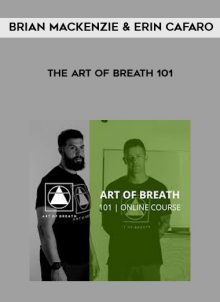 The Art of Breath 101 from Brian Mackenzie & Erin Cafaro
The Art of Breath 101 from Brian Mackenzie & Erin Cafaro 

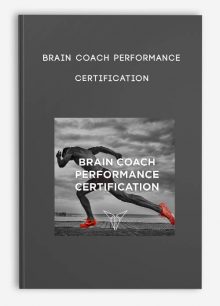
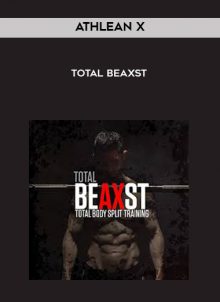
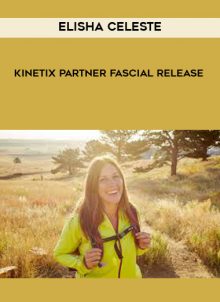
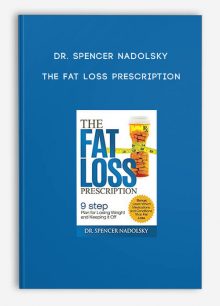
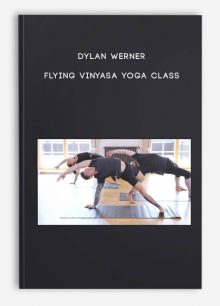
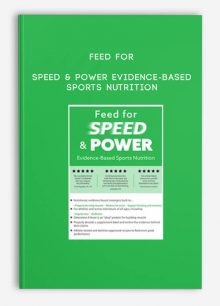

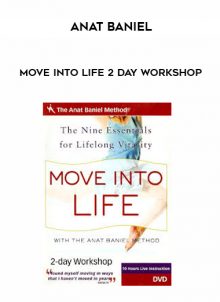
king –
We encourage you to check Content Proof carefully before paying.“Excepted” these contents: “Online coaching, Software, Facebook group, Skype and Email support from Author.”If you have enough money and feel good. We encourage you to buy this product from the original Author to get full other “Excepted” contents from them.Thank you!